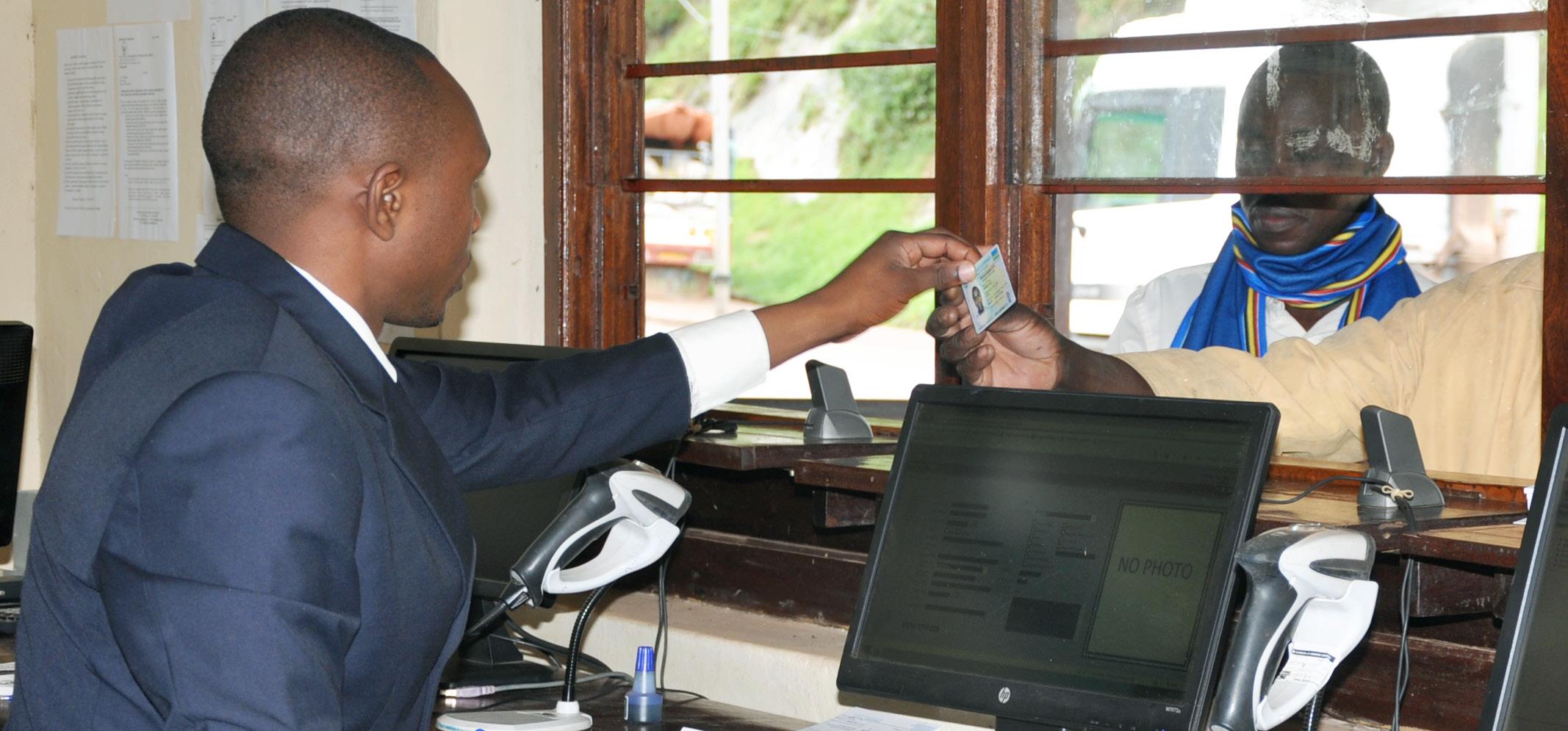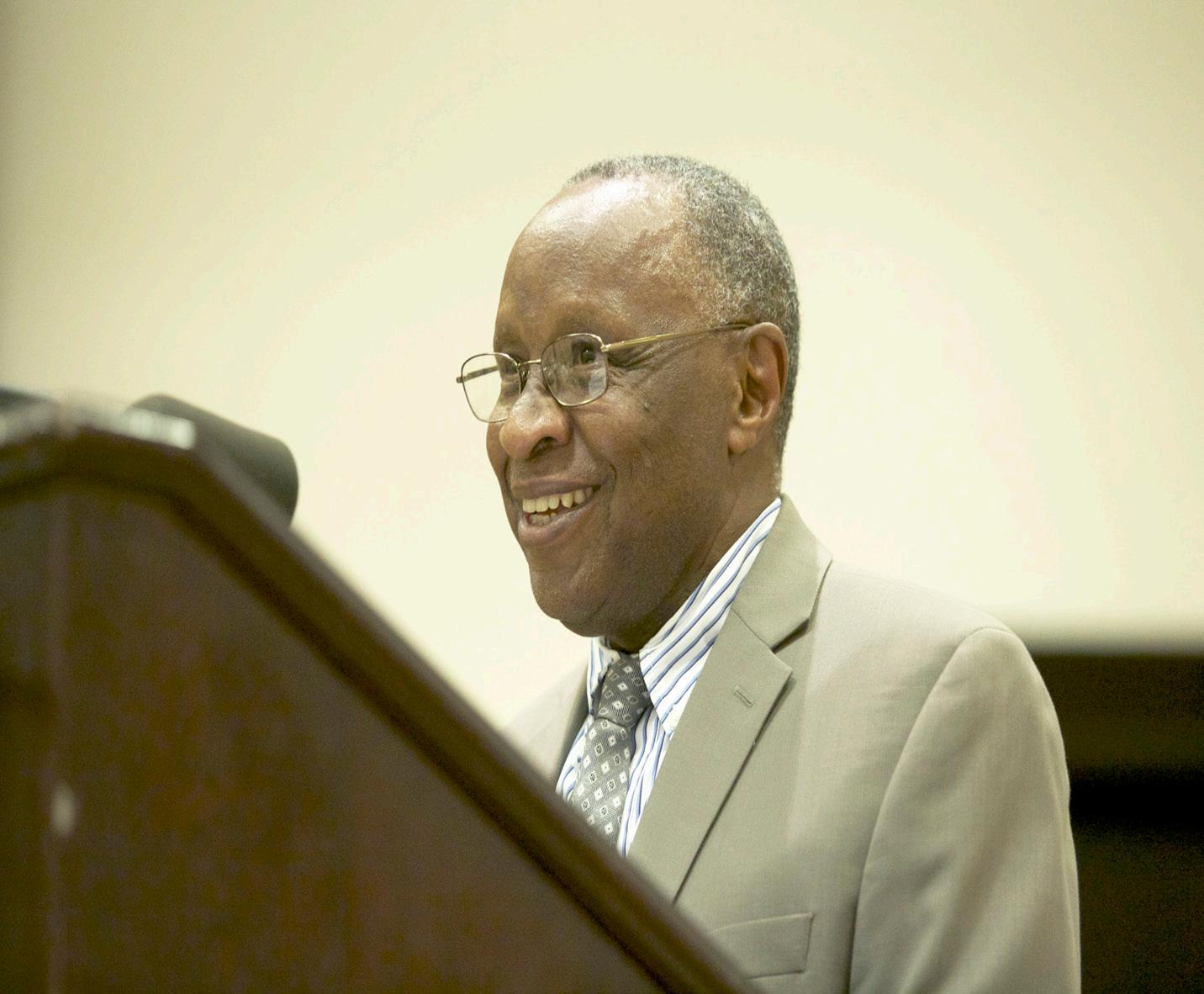
4 minute read
Use of ID Cards to travel
Integration News Use of National ID Card to travel takes shape
Presidents Paul Kagame of Rwanda, Yoweri Museveni of Uganda and Uhuru Kenyatta of Kenya launched the use of National Identity card as a travel document recognized by the three countries in January 2014. During the launch, Presidents Kagame and Kenyatta traveled to Kampala using their national ID cards, an act that was seen as a catalyst to support the project. The use of national ID cards is one of the mega projects under the auspices of the Northern Corridor Integration Initiative which the three countries agreed to fast-track with the aim to attain greater benefits of the corridor’s integration process. Observers say that the use of ID cards and other projects in the Northern Corridor Initiative framework, which has since seen the entry of South Sudan, is one of the most exciting and dynamic ventures undertaken by EAC leaders in recent years. Although the use of ID cards came to complement the commonly known use of passport, it is rapidly gaining fame amongst the citizens of the three countries. At the moment, it is only Rwandan and Kenyan citizens that use IDs while Ugandans use voter’s card as they wait for issuance of their longawaited national ID cards.
Advertisement
The use of ID cards has facilitated people, mostly those involved in cross border trade and others with other travel reasons such as visiting friends and family or attending conferences, workshops and meetings to carry on with their travels.
Today, a traveler requires just a national ID card especially for Rwandans and Kenyans, voting cards for Ugandans and student cards to move. It applies to all Kenyan, Rwandan and Ugandan borders including airports.The use of IDs has saved time and money to travelers, according to some Rwandan nationals who spoke to Integration Affairs Magazine. At Gatuna border, the busiest border post linking Rwanda to Uganda and then Kenya, most travelers especially those from Rwanda use their ID cards for clearance at the immigration offices. The Communications Officer at Rwanda’s Directorate General of Immigration and Emigration, Ange Sebutege says that the number of travelers using ID cards has recently increased with people now embarking on using IDs instead of passports. Since January up to December 2014, 1,176, 787 Rwandans have crossed borders using their Identification cards. As it is done with passports, travelers present their ID cards and immigration officers check whether they are valid. However, whereas the passports have space where immigration officers stamp, the ID cards don’t have that space.
A Rwandese National uses National ID Card as a travel document at Gatuna Border post www.mineac.gov.rw July-Dec 2014 17
The traveler is instead given a coupon stamped by immigration officers and this is used to enter into another country. This coupon bears dates of entry. At Gatuna border the process of clearing at the Rwandan and Ugandan sides takes almost a halfa-minute to clear the traveler.
But sometimes the process takes much longer because of the number of persons waiting to be cleared. Sande Lawrence is one of the beneficiaries of the ID card project. As a regular traveler between Kigali and Kampala, Mr. Sande, a Rwandan national, says that the adoption of the ID card as a travel document has eased his travels.
“I no longer have to line up for a new passport. When I’m traveling to Uganda I just come and present my ID and pass,” he said. The use of ID and student cards has also eased the burden on Rwandans to buy new passports. This is however for the frequent travelers between Kampala, Nairobi and Kigali. “People used to spend money and time on getting new passports but with the use of ID cards, that cost is not necessary. People are now benefiting from the integration process. This is what we wanted earlier and the government of Rwanda deserves appreciation for this initiative,” Mr. Sande said.
Bishop John Rucyahana, the Chairman of Rwanda’s National Unity and Reconciliation Commission (NURC) was also at Gatuna border traveling to Uganda at the time Integration Affairs magazine visited the border. He commended the use of ID and student cards, saying that it was long overdue.“This is the real integration that people were waiting for. In fact we would have implemented this even fifty years ago. The use of IDs facilitates the free movement of people.
If we had implemented it early we would be developed economically, politically and socially,” Bishop Rucyahana said.
The Bishop further observed that the implementation of the project justifies the togetherness among East African citizens, adding that there is no need for people to be treated differently yet they belong to the same region and continent.
“We are Africans, we should define our own destiny; we need to work together, share our experiences and resources.
East African Community is the right platform to achieve and bring us together,” he added.

NURC Chairman Bishop John Rucyahana.










